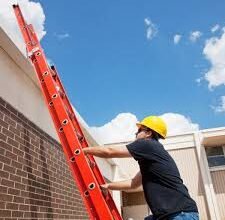iFoam: Insulation Removal, Air Sealing, and Spray Foam Insulation

You know that tight, cozy feeling you get in your chest when you’re inside on a cold day? That’s what insulation is supposed to do—keep the heat in and the cold out. But what if your home is missing that critical barrier between the indoors and out? You might be surprised to learn how easy it is to lose heat (and money) through cracks, holes, and poor insulation. Don’t worry, though! There are plenty of ways to fix up your home and keep those temperatures regulated. In this blog post, we’ll discuss insulation removal, air sealing, and spray foam insulation—three methods for improving your home’s energy efficiency. So read on to learn more about each one, then decide which is right for you!
What is spray foam insulation and what are its benefits for homeowners
Spray foam insulation is a type of insulation that is made from polyurethane, which is a petroleum-based product. Foam insulation, like from iFoam is available in two different forms: closed-cell foam and open-cell foam. Closed-cell foam is denser than open-cell foam and has a higher R-value, which means it is more effective at insulating your home. Open-cell foam is less dense and has a lower R-value, but it is also more flexible, making it ideal for use in hard-to-reach areas. Foam insulation can be used to insulate your walls, ceilings, floors, and even your attic.
Foam insulation has a number of benefits for homeowners. First, it is an effective way to reduce your energy bills. Foam insulation works by creating a barrier between the inside of your home and the outside world, which helps to keep your home warmer in the winter and cooler in the summer. Second, foam insulation can help reduce noise pollution. Foam insulation works to absorb sound, which can help reduce the amount of noise that you hear from outside your home. Finally, foam insulation is a great way to improve the value of your home. Homes that are well insulated tend to sell for more than homes that are not as well insulated.
Detaching and installing a new one
If your home is like most, it’s probably full of old, inefficient insulation. Not only does this make your home less comfortable, but it also drives up your energy bills. Fortunately, there is a relatively simple method for removing old insulation and replacing it with newer, more efficient spray foam insulation. Here’s what you need to know:
Removing old insulation can be a messy and time-consuming job. However, before installing new spray foam insulation, all old insulation must be removed. This will help ensure that your home is properly sealed and insulated.
There are several methods for removing old insulation. You can use a vacuum cleaner with an attachment specifically designed for insulation removal or manually remove the insulation with a putty knife or similar tool. Manual removal of home insulators can be a bit difficult and can sometimes be risky.
Once all the old insulation has been removed, it’s time to seal any gaps or cracks in your home’s envelope. This will help prevent air leaks and ensure that your home is properly insulated. You can use caulk, weatherstripping, or spray foam insulation to seal gaps and cracks.
Finally, it’s time to install the new spray foam insulation. This can be done with a professional installer, or you can do it yourself with a do-it-yourself kit. Spray foam insulation is applied wet and expands as it dries, so it’s essential to follow the manufacturer’s instructions carefully.
Installing new spray foam insulation is a great way to improve the energy efficiency of your home. Not only will it help keep your home more comfortable, but it will also save you money on your energy bills. If you’re unsure whether spray foam insulation is right for your home, contact a professional insulation contractor to discuss your options.
The cost of foam insulation and how it can save you money in the long run
Foam insulation is one of the most popular types of insulation on the market today. It’s also one of the most expensive. But is it worth the cost?
Let’s take a look at the pros and cons of foam insulation to help you decide if it’s right for your home.
Pros of Foam Insulation
- Energy efficiency: One of the biggest benefits of foam insulation is that it’s highly energy efficient. It can help keep your home warm in the winter and cool in the summer, which can lead to lower energy bills.
- Durability: Foam insulation is also very durable. It won’t settle over time like fiberglass insulation can, and it won’t absorb moisture, which can lead to mold and mildew problems.
- Pest resistance: Foam insulation is also resistant to pests, such as rats and mice. This can be a big plus if you live in an area with a lot of pests.
Cons of Foam Insulation
- Cost: As we mentioned, foam insulation is one of the most expensive types of insulation on the market. If you’re on a budget, it might not be the right choice for you.
- Foam insulation can also be difficult to install. If you’re not experienced in home improvement projects, it might be best to hire a professional to install foam insulation for you.
- Health concerns: Some people have raised concerns about the health effects of foam insulation. The chemicals used in foam insulation can off-gas, which can be harmful to your health.
Overall, foam insulation is a great choice for many homes. It’s energy-efficient, durable, and pest resistant. However, it’s also important to weigh the pros and cons before making a decision. If you’re on a budget, foam insulation might not be the right choice for you. But if you’re looking for a long-term investment, foam insulation can save you money in the long run.
Tips for maintaining your foam insulation and ensuring that it lasts for years to come
If you’re like most people, you probably don’t think much about the insulation in your home. But if you have foam insulation, it’s important to take steps to maintain it and ensure its longevity. Here are some tips for keeping your foam insulation in good condition:
- Check for leaks regularly. Foam insulation can be susceptible to leaks, so it’s important to check for them on a regular basis. If you notice any leaks, make sure to seal them immediately.
- Avoid moisture. Moisture can damage foam insulation, so it’s important to keep it away from areas where there is a lot of moisture, such as bathrooms and kitchens.
- 3. Keep it clean. Foam insulation can collect dust and dirt over time, so it’s important to keep it clean. You can use a vacuum cleaner with a soft brush attachment to gently remove dirt and dust.
- Inspect it regularly. It’s a good idea to inspect your foam insulation on a regular basis to make sure it’s in good condition. If you notice any damage, make sure to repair or replace it immediately.
- Follow the manufacturer’s instructions. Be sure to follow the manufacturer’s instructions when installing or repairing foam insulation. This will help ensure that the insulation is installed properly and will last for many years.
Having great insulation at home is also a great investment. Choosing the best quality of home insulators and insulation services can sometimes be hard but iFoam is here to serve you and give you the best insulation services!
Possible Meta Description: Insulation has a vital role to play in providing safe and healthy living. Learn how to choose the right type of insulation and what are the benefits of insulation services.




